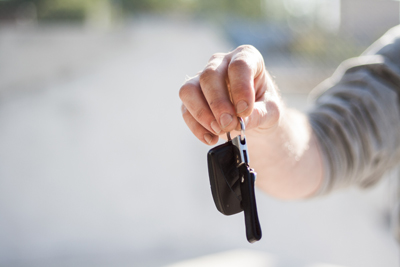Financing a new or used vehicle is growing more expensive than ever for consumers, according to the car shopping experts at Edmunds. New data from Edmunds reveals:
Interest rates are continuing to rise.
The average annual percentage rate (APR) on new financed vehicles climbed to 6.5% in Q4 2022 compared to 5.7% in Q3 2022 and 4.1% in Q4 2021. The APR on used financed vehicles climbed to 10% in Q4 2022 compared to 9% in Q3 2022 and 7.4% in Q4 2021.
A greater share of consumers are committing to monthly payments of $1,000 or more.
15.7% of consumers who financed a new vehicle in Q4 2022 committed to a monthly payment of $1,000 or more---the highest it's ever been---compared to 10.5% in Q4 2021 and 6.7% in Q4 2020. 5.4% of consumers who financed a used vehicle in Q4 2022 committed to a $1,000+ monthly payment---also a record high---compared to 3.9% in Q4 2021 and 1.5% in Q4 2020.
Consumers are putting more money down on their purchases to offset rising costs.
The average down payment for new and used vehicles hit record highs in Q4 2022, climbing to $6,780 and $3,921, respectively.
A growing share of luxury shoppers are turning their backs on leasing and choosing to purchase instead.
Edmunds data reveals that new-vehicle lease penetration dropped to 16% in Q4 2022, compared to 29% in Q4 2019. Luxury new-vehicle lease penetration dropped to 26% in Q4 2022, compared to 53% in Q4 2019.
"Just as new and used car prices finally started to cool off in Q4, rapidly rising interest rates created an even greater barrier to entry for consumers who rely on financing---which is the vast majority of car shoppers," said Ivan Drury, Edmunds' director of insights. "Although the last quarter of the year typically skews toward luxury vehicle purchases, this near-record percentage of vehicles that are being purchased rather than leased reflect tougher market conditions far more than affluent consumers shelling out a bit more than usual to treat themselves over the holiday season."
Edmunds analysts caution the combination of costlier vehicle financing and cooling used car values could spell trouble for some consumers down the road if they do not budget or plan accordingly. Edmunds experts conducted a deeper dive into the share of new vehicle sales with a trade-in that had negative equity in Q4 2022, which reveals:
- 17.4% of new vehicle sales with a trade-in had negative equity in Q4 2022, compared to 14.9% in Q4 2021 and 31.5% in Q4 2020.
- The average amount owed on upside-down loans was $5,341 in Q4 2022 compared to $4,141 in Q4 2021 and $5,059 in Q4 2020.
"Vehicle equity is really a tale of two gears for consumers over the past few years," said Drury. "At the onset of the pandemic, consumers benefited from low interest rates and elevated trade-in values, helping shield even the more questionable financing decisions from resulting in negative equity. This unique confluence of market forces resulted in some vehicle owners being able to take advantage of positive equity on their loans and even their leases. But as we shifted toward an environment with diminished used car values and rising interest rates over the past few months, consumers have become less insulated from those riskier loan decisions, and we are only seeing the tip of the negative equity iceberg."
As a 2023 resolution, consumers may benefit from resolving to more closely monitor their vehicles' values so they are not shocked to find out later about potential significant negative equity.
Source: Edmunds










Abby Andrews